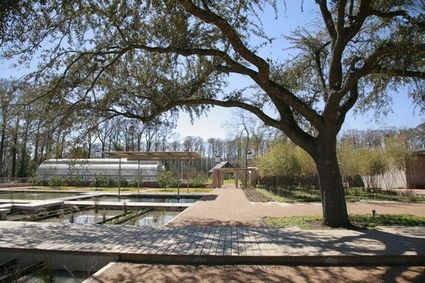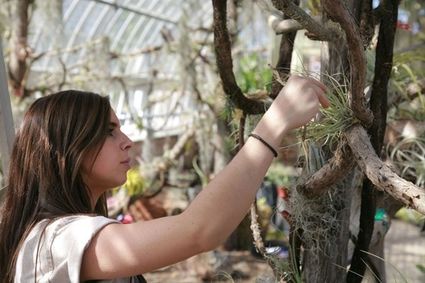Restored Shangri La set to open Tuesday
Last updated 2/21/2008 at Noon
Six years after the announcement that Lutcher Stark’s Shangri La garden would be open to the public, visitors will finally be able to walk through the land that has been closed for half a century.
Shangri La Botanical Garden and Nature Center will open at 10 a.m.
Tuesday, March 11, though it might not be as beautiful as director Michael Hoke envisioned.
But blame it on nature.
The recent warm winter weather has flowers blooming early.
But a few flowers past their blooms won’t hinder the enthusiasm of people who have anxiously been awaiting the opening of the 252-acre, multi-million-dollar park.
Hoke expects 50,000 to 60,000 visitors a year.
Stark, a timber heir and philanthropist, named his garden along Adams Bayou in Orange after the utopian fictional place set in James Hilton’s popular novel, “Lost Horizon,” which was made into two movies, one in 1937 and another in 1973.
Stark began his private Shangri La in 1937.
After World War II, he sometimes opened his gardens to the public and thousands of visitors would come to walk and look at the flowers, particularly the azaleas in the spring.
The Nelda C. and H.J. Lutcher Stark Foundation, which has developed and will operate Shangri La, reports that a snow storm in 1958 killed thousands of azalea plants and Stark closed the garden, keeping it behind tall fences.
Now, Shangri La is more than a garden for visitors.
It will also be an education center for all levels, from kindergarten to graduate studies.
Of the 252 acres, about 25 will be gardens, and the rest is being left as nature cypress-tupelo swamp for the nature center area.
Hoke said Shangri La is also the most ecologically “green” operation in Texas, using recycled materials for construction and solar energy for operations.
Already, a statewide group for architects is planning a tour, he said.
Visitors to Shangri La will enter off 20th Street, across from the site where the city of Orange’s Thomen Community Center was for years.
The Stark Foundation bought the site and will make it into a special landscaped parking lot.
For the opening and other busy days, visitors should park downtown at the foundation’s parking lots for the Lutcher Theater and the Stark Museum of Art. Shuttle buses will carry visitors to Shangri La.
At the entrance, visitors will pay a small fee.
Year-long admission memberships for individuals and families, including grandchildren, will be available.
Visitors may first go to the exhibition hall for a history of Shangri La and information about the flora and fauna.
A specially-made eight-minute documentary film, including old footage of Stark, will be shown in the exhibition hall.
As the film ends, the shade across a wall-sized window will open to show the green wetlands and the bayou.
Then, visitors may go to the boat pavilion to catch a ride along the bayou and go to one of the nature sites.
Hoke estimates tours of both areas of Shangri La will take five hours.
If visitors choose, they may go to the gardens, instead.
The gardens will include Stark’s original 1940s greenhouse and a 1917greenhouse that was originally at his childhood home on Green Avenue.
Both greenhouses have been restored.
The 1917 greenhouse will display some of Stark’s orchid collection, along with those from retired dentist Dr.
Robert Travis, along with bromeliads and ferns.
The 1940s greenhouse will have rare plants and a children’s area.
Children are welcomed visitors to Shangri La.
They will have their own area where they can learn about plants and even plant seeds.
They can water by using a hand-pump designed after an old fire truck pump.
The garden area will include five garden “rooms” styled after different elements of art. Commissioned sculptures will be featured in the areas.
Ruby Lake in the garden area is a vast heronry, or nesting ground for great white egrets, large pink roseate spoonbills, blue herons and other birds.
Special blinds have been designed so visitors do not disturb the birds and cameras will send images of the nests.
Shangri La is also incorporating elements left by Stark, including his bell collection, which he based on the movie “Lost Horizon.” He also collected antique sugar pots, used to cook down cane into molasses, as planters.
Many of the pots will be used in the new Shangri La.
Flowers in the gardens will change with the seasons.
The visitors area will include a café, operated by David Claybar, owner of the Old Orange Café.
The café will sell sandwiches, salads, soups and desserts, and beer and wine will be available.
A book and gift shop is next to the café and will feature nature, ecology and gardening items.
















Reader Comments(0)